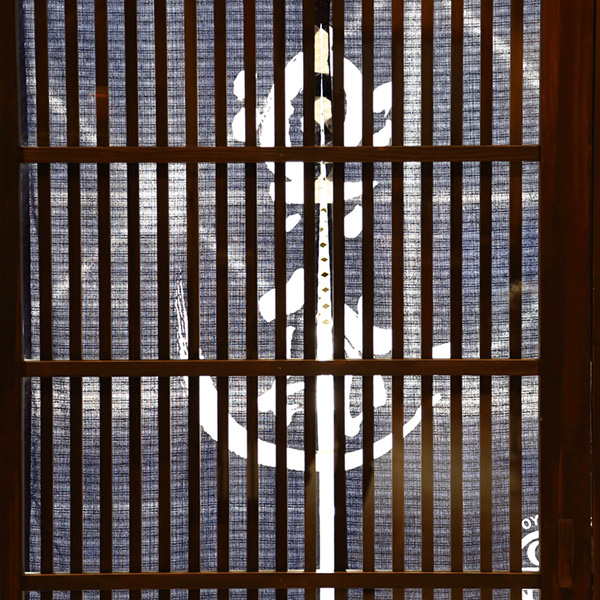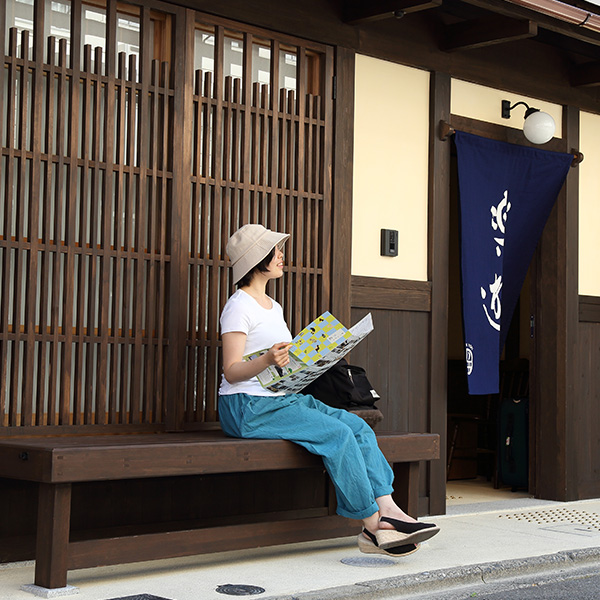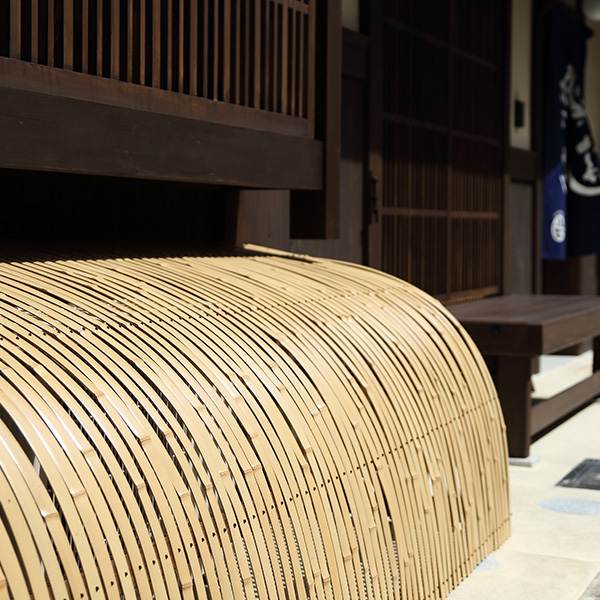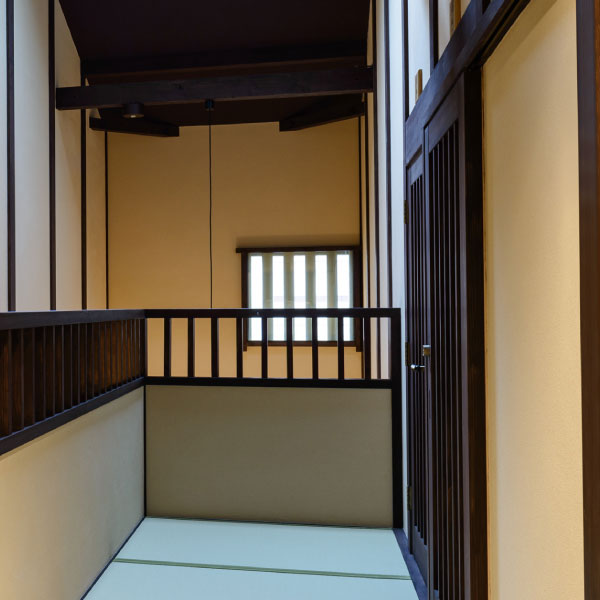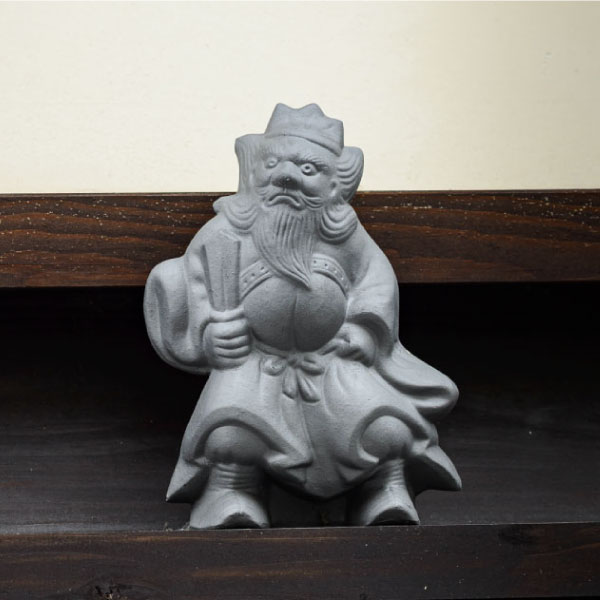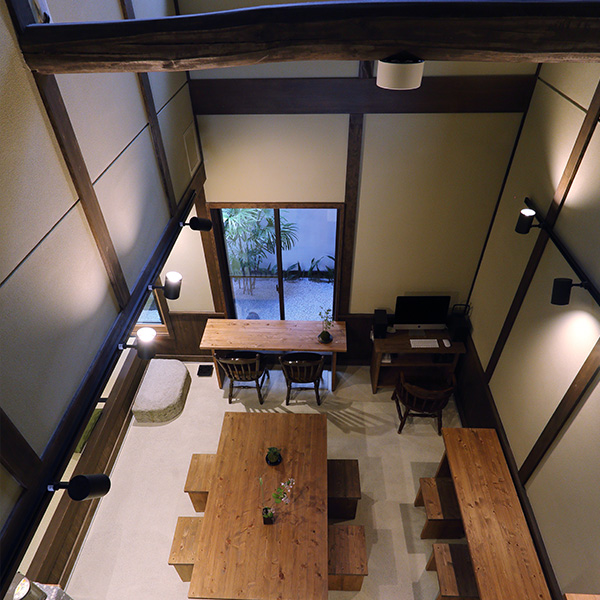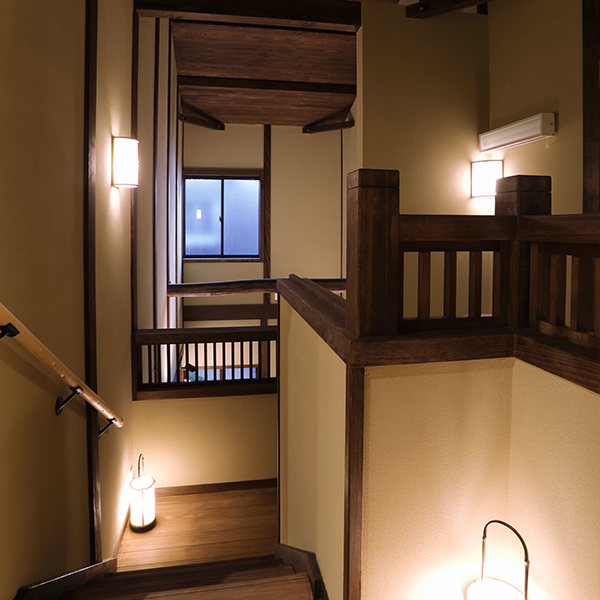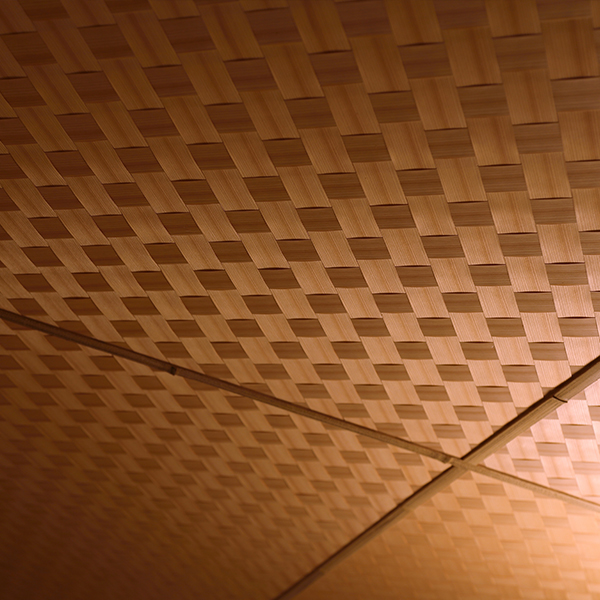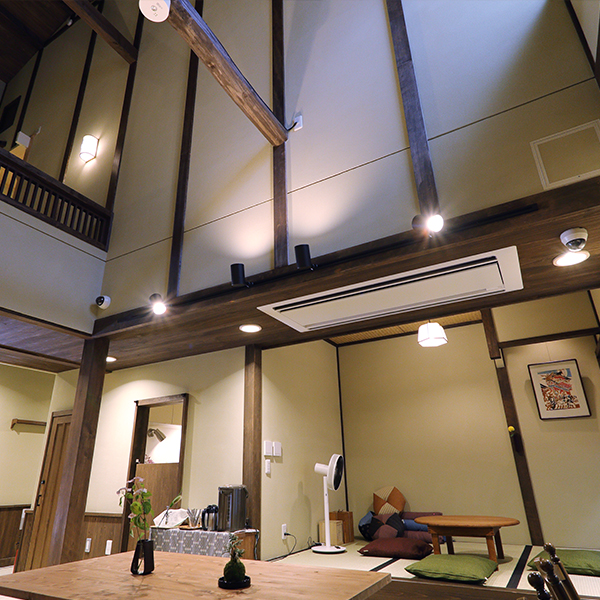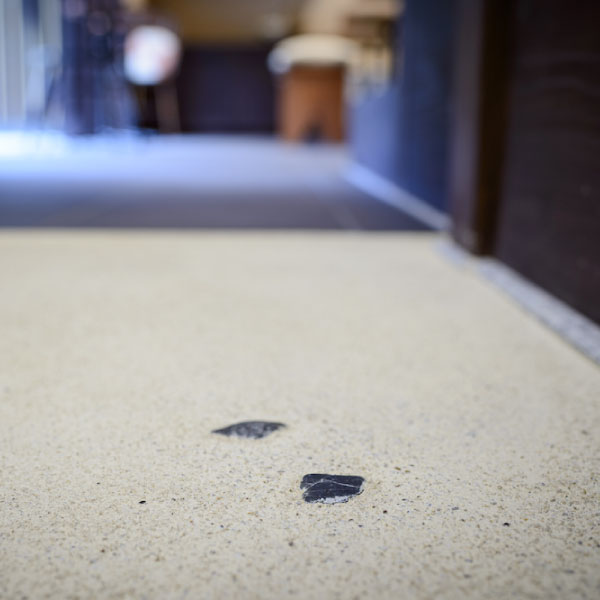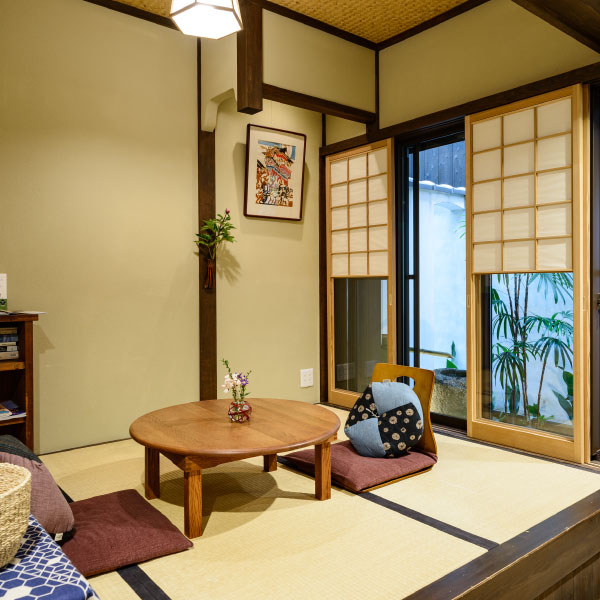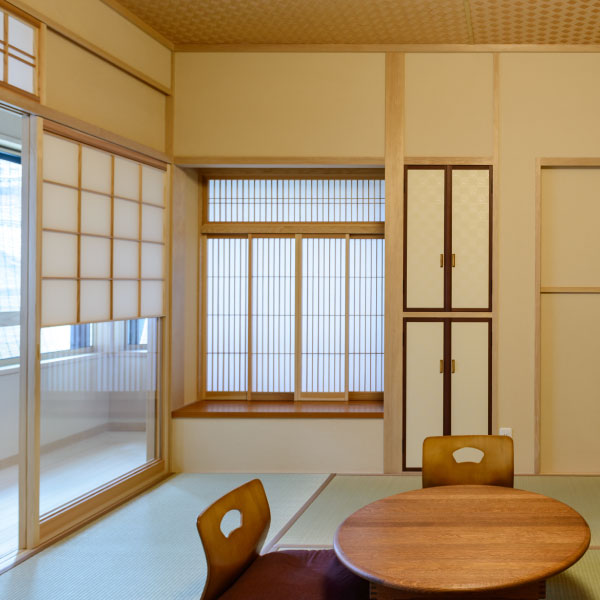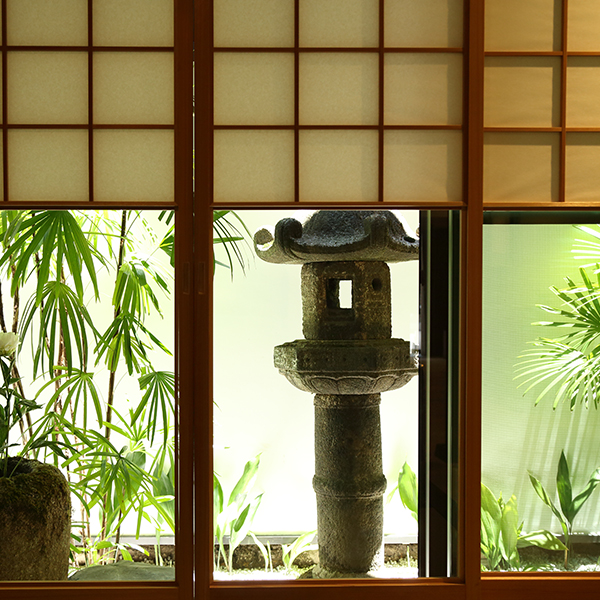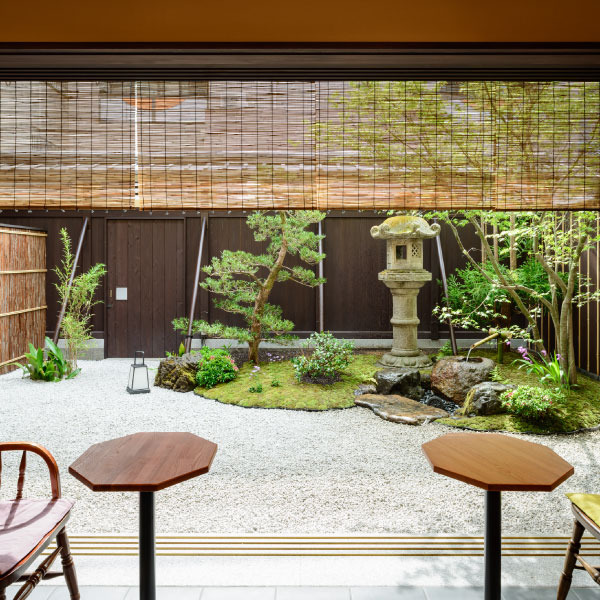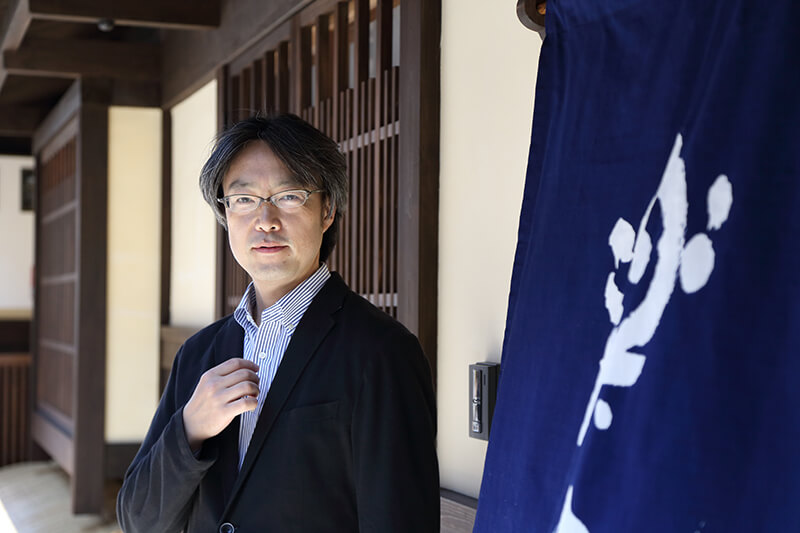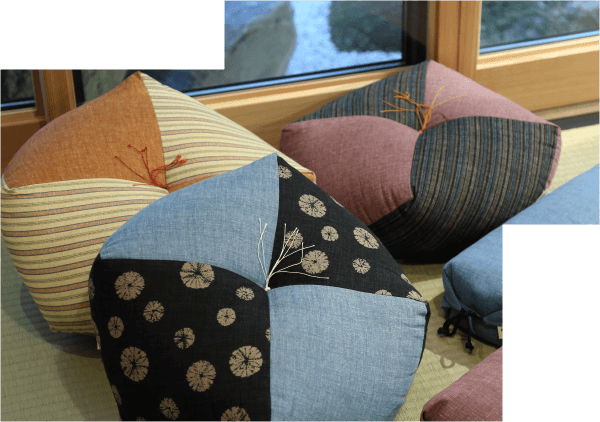Tori-niwa
−The tori-niwa is a hallway leading from the entrance of the building to the very back of the townhouse, and a rare indoor area where shoes are allowed.−
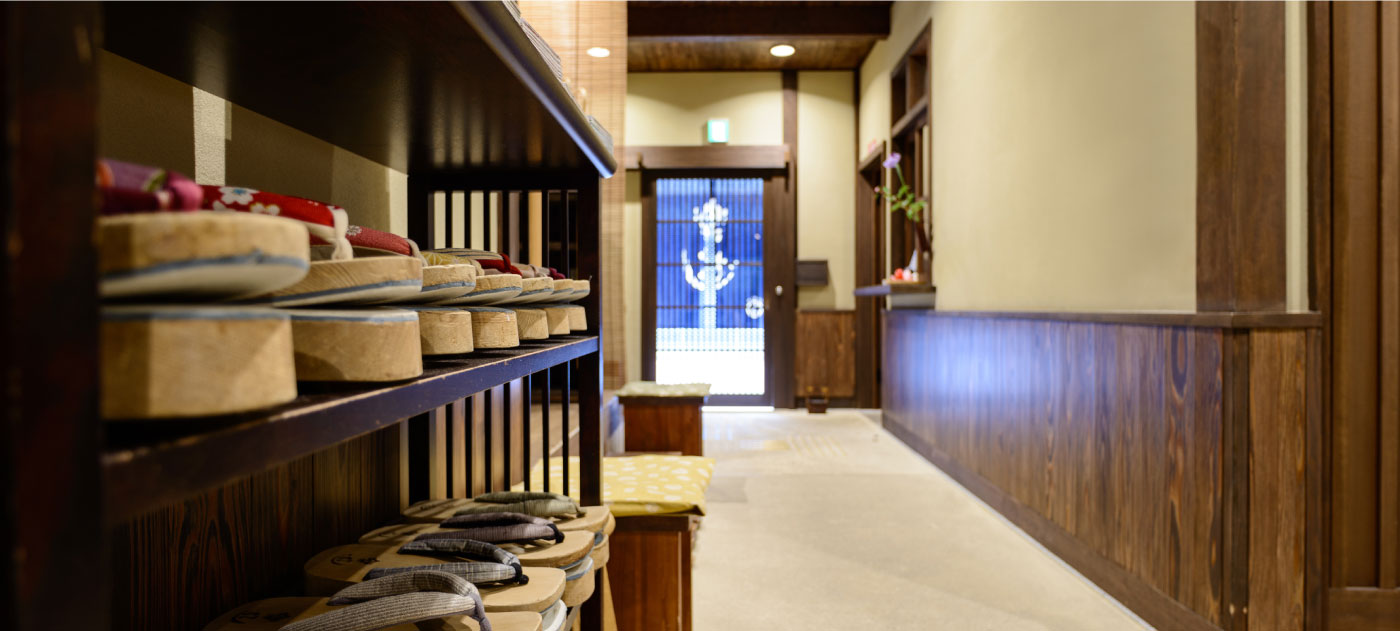
Kyomachiya were nicknamed “unagi no nedoko”, or “eel bedrooms” because of their structurally narrow and elongated design. The hallway that runs from the entrance of the building to the Japanese garden in the rear was called the “tori- niwa”. The “tori-niwa” provided additional ventilation for the “hibukuro”, and could prevent the spread of fires while also bringing in fresh outside air. At
